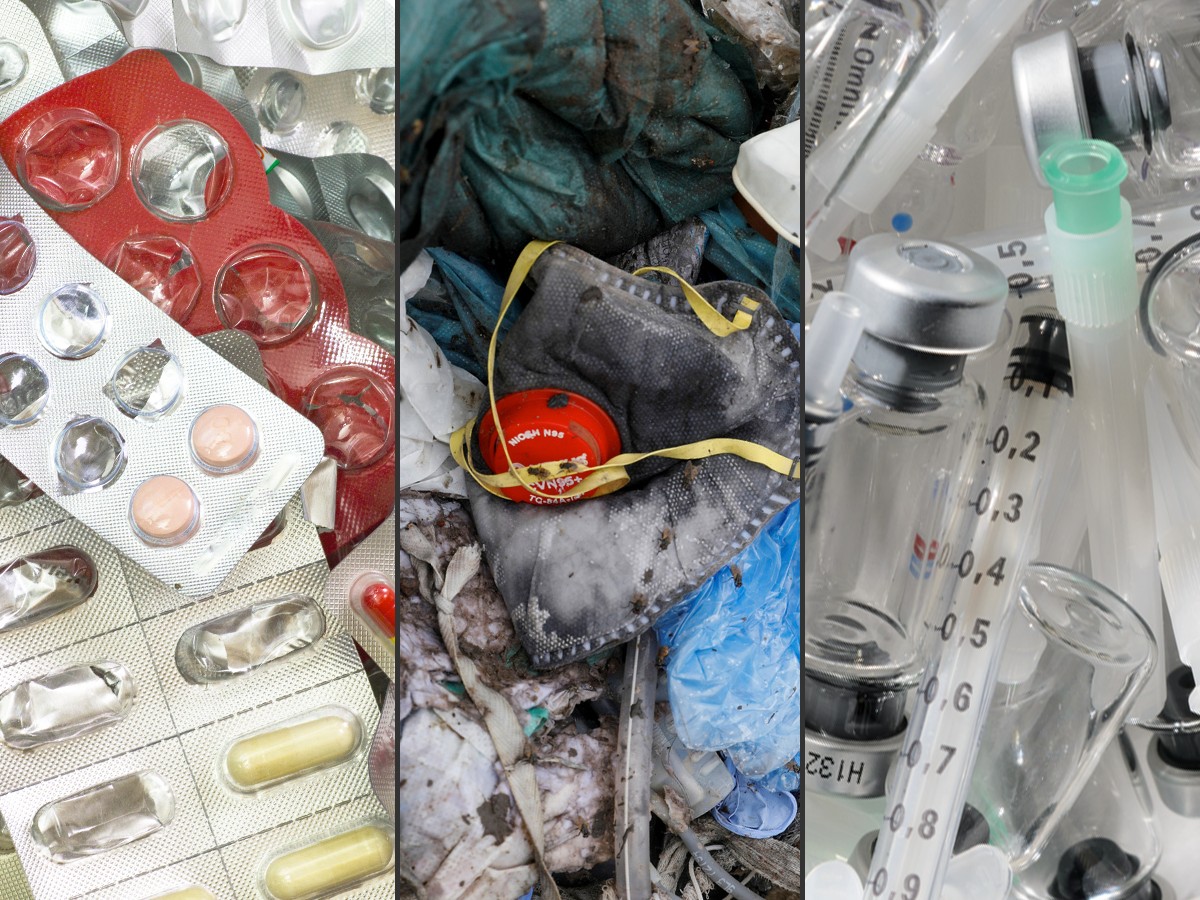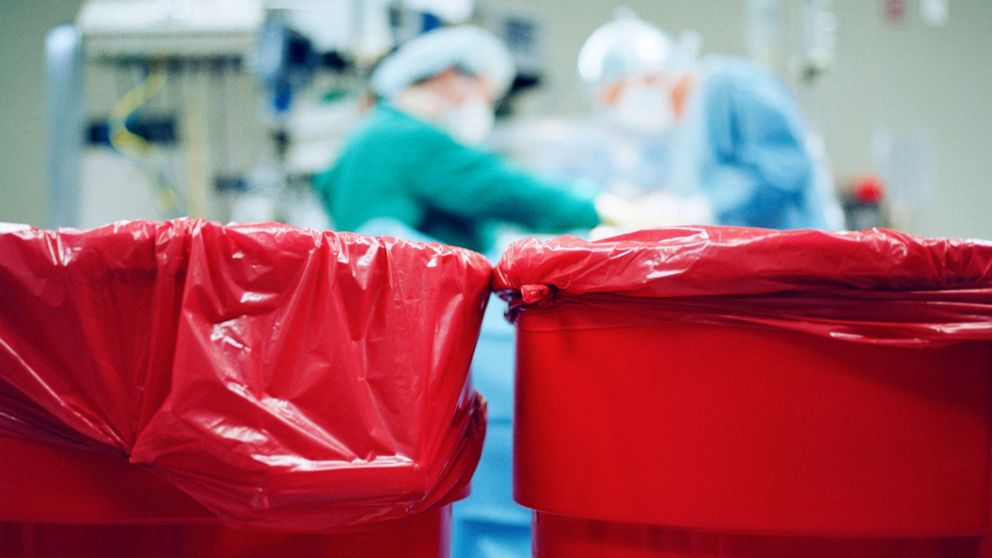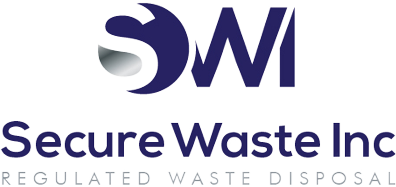Safe Medical Waste Disposal: OSHA & HIPAA Compliance
Medical facilities produce a wide range of waste every single day, from used syringes and contaminated gloves to patient records and pharmaceutical packaging, and proper disposal isn’t optional. It’s a legal, safety, and operational requirement that affects every aspect of healthcare delivery. OSHA’s medical waste rules exist to protect healthcare workers from serious hazards that could result in life-threatening infections and chronic diseases.
U.S. hospitals report an estimated 385,000 needlestick and sharps injuries each year, exposing staff to dangerous pathogens such as Hepatitis B Virus (HBV), Hepatitis C Virus (HCV), and Human Immunodeficiency Virus (HIV). These injuries represent not just statistics but real healthcare workers whose lives are forever changed by preventable accidents. Beyond the devastating human cost, violations of waste disposal regulations lead to expensive penalties, mandatory corrective action plans, damaged reputations, and potential loss of accreditation or licensure.
Safe waste handling, comprehensive staff training, and clear protocols form the backbone of a compliant and secure healthcare environment. When facilities prioritize proper waste management, they create a culture of safety that protects employees, patients, visitors, and the broader community. This commitment to excellence in waste disposal demonstrates the organization’s dedication to providing comprehensive, high-quality care.
OSHA Compliance: Protecting Healthcare Workers
OSHA mandates that every healthcare employer maintain a written Exposure Control Plan that outlines in detail how workers are protected from bloodborne pathogens. This critical document isn’t just a formality. It serves as the operational blueprint for preventing occupational exposure to infectious materials. The plan must include documented procedures, annual updates to reflect changes in technology and practices, and clearly assigned responsibilities so every team member knows their role in maintaining safety.
Core OSHA Requirements Include:
Training: Staff must be trained comprehensively to handle sharps safely, avoid recapping needles except in specific controlled circumstances, and use personal protective equipment (PPE) correctly and consistently. Training should be provided at the time of initial assignment, annually thereafter, and whenever new procedures or equipment are introduced. This education must be delivered during working hours at no cost to employees and should be tailored to the literacy level and language of the workforce.
Engineering Controls: Safety-engineered needles, needleless IV systems, and retractable syringes represent the first line of defense against injuries. These devices can prevent up to 88% of sharps injuries when properly selected, implemented, and used. Healthcare facilities must evaluate and implement adequate engineering controls as the primary means of preventing exposure to hazardous materials. This includes regularly soliciting input from frontline workers about the effectiveness of devices and considering new technologies as they become available.
Proper Sharps Disposal: Approximately one-third of all sharps injuries occur during or after disposal, rather than during the initial medical procedure, making proper container placement and handling absolutely critical. Containers must be easily accessible, positioned at the point of use, and replaced before they become overfilled. The design and placement of sharps containers can significantly impact injury rates, so facilities should carefully consider workflow patterns when determining container locations.
Vaccinations: Hepatitis B vaccination must be offered to all at-risk employees within 10 days of their initial assignment, at no cost to the worker. This protection is crucial because Hepatitis B can survive in dried blood for up to seven days, making it a persistent threat in healthcare environments. Employees who decline vaccination must sign a declination form, but they retain the right to receive the vaccination at any later date.
Recordkeeping: Failure to maintain updated training logs, incident documentation, exposure control plans, or post-exposure follow-up records is one of the most common OSHA citations during inspections. Facilities must keep detailed records that demonstrate compliance, track the effectiveness of controls, and document the investigation of exposure incidents. These records serve as both proof of compliance and valuable data for improving safety programs.
OSHA’s penalties are steep and continue to increase with inflation adjustments. A single serious violation can cost around $16,000, while willful or repeated violations can exceed $160,000 per violation. Multiple violations can quickly compound into financially devastating penalties. A recent example involved a dental clinic being fined more than $20,000 for failing to update its exposure control plan, demonstrating that even minor oversights that don’t result in actual injuries can carry significant consequences.
A strong OSHA compliance program means more than avoiding fines and citations. It protects your team from preventable injuries and diseases, reduces workers’ compensation claims and associated costs, improves employee morale and retention, and reinforces a culture of safety that permeates every aspect of patient care. When workers feel protected, they can focus on delivering excellent healthcare rather than worrying about their own safety.
Sharps & Medical Waste Disposal Best Practices
Sharps, such as needles, scalpels, lancets, suture needles, broken glass, and similar instruments, must be handled with extreme care from the moment they are used until they are correctly disposed of and destroyed. These items pose an immediate threat of injury and disease transmission. Disposal best practices help prevent injuries to healthcare workers, housekeeping staff, waste haulers, and even the general public while also protecting environmental health.
Key Sharps Disposal Rules:
Always use rigid, puncture-resistant, leakproof sharps containers that are closable and clearly labeled with the biohazard symbol. Containers must meet specific design standards to prevent injuries during filling, transport, and disposal. The container material must be strong enough to withstand normal handling without puncture or rupture.
Position containers at the point of use so sharps can be placed immediately after use without the need to walk across a room or pass the sharps to another person. This immediate disposal dramatically reduces the risk of accidental needlestick injuries. In procedure areas, please make sure containers are within arm’s reach of where sharps are used.
Keep containers upright and accessible at all times. Containers that tip over or are challenging to reach increase the likelihood of improper disposal or injury. Mount containers securely to walls or place them on stable surfaces where they cannot be easily knocked over, especially in high-traffic areas or locations where children might be present.
Seal or replace containers when they reach three-fourths full. Never allow overfilling, which forces workers to push sharps down into the container, thereby increasing the risk of puncture injuries. Overfilled containers also pose risks during transport and handling by waste management personnel. Please set up clear procedures for monitoring container fill levels and replacing them promptly.
Never open, empty, or reach into sharps containers under any circumstances. These containers are designed for one-way disposal only. Any attempt to retrieve items or consolidate contents creates an unacceptable injury risk. Once sealed, sharps containers should be handled only by trained personnel wearing appropriate PPE.
Staff must be trained never to recap needles unless necessary for a specific medical procedure. When recapping is required, only a one-handed scoop technique or a mechanical recapping device should be used. This exception must be clearly documented in facility policies, along with appropriate justification.
Checklist: Safe Sharps Disposal
Use clearly labeled, approved sharps containers that meet all regulatory requirements and are appropriate for the type and volume of sharps generated.
Place containers close to patient-care areas where sharps are used, ensuring they are visible, accessible, and positioned to allow safe disposal without excessive movement.
Replace containers before they reach capacity, establishing a monitoring system that prevents overfilling and ensures continuous availability of safe disposal options.
Please be sure to use PPE during all waste handling activities and maintain strict no-recapping rules, except where specifically allowed and documented.
Could you seal and secure containers before pickup using the container’s designed closure mechanism, and verify that containers are appropriately labeled for transport?
Maintain a chain of custody through a certified waste service provider, ensuring that containers are tracked from generation through final disposal with appropriate documentation.
Expert Tip:
Schedule regular pickups before containers are full rather than waiting for containers to reach capacity. This proactive approach reduces overflow risks, prevents the temptation to overfill containers, and ensures your entire waste management workflow remains OSHA-compliant, maintaining a safer environment for everyone.
Ensuring HIPAA Compliance in Waste Management
Medical waste isn’t just about sharps and biohazards. Patient information must also be protected during disposal to maintain privacy and comply with federal regulations. HIPAA requires covered entities to destroy Protected Health Information (PHI) in a way that prevents reconstruction by any reasonable means. This applies to all forms of PHI, whether on paper, electronic devices, or other media.
PHI Disposal Requirements:
Paper PHI, including patient charts, prescription pads, insurance forms, appointment schedules, lab results, and any other documents containing identifiable health information, must be shredded using cross-cut methods, pulverized, or incinerated so no readable information remains. Simple strip shredding is insufficient because documents can potentially be reconstructed. The destruction must be complete and irreversible.
Electronic PHI stored on hard drives, USB drives, tablets, smartphones, CDs, backup tapes, or any other digital storage media must be securely wiped using Department of Defense-approved software, overwritten multiple times to prevent data recovery, or physically destroyed through methods such as crushing, shredding, or degaussing. Simply deleting files or reformatting drives does not constitute adequate destruction because data can often be recovered using readily available software.
PHI disposal policies should be integrated into HIPAA training for all employees who handle patient information, not just clinical staff. Administrative personnel, billing departments, medical records staff, and even IT professionals must understand their responsibilities for protecting patient information throughout its lifecycle, including during disposal. Training should include specific examples of what constitutes PHI and how to identify materials requiring secure destruction.
Many healthcare facilities integrate secure document destruction bins into their daily workflow. These lockable containers, often placed in nursing stations, administrative offices, and medical records areas, maintain confidentiality until they are collected by a certified shredding vendor who provides certificates of destruction. This systematic approach protects patient privacy and shields the organization from costly HIPAA violations, which can result in fines of millions of dollars.
Partnering with Secure, Sustainable Waste Removal Services
Modern healthcare is shifting toward environmentally responsible waste practices without compromising safety or compliance. The World Health Organization reports that 85% of medical waste is actually non-hazardous and comparable to residential waste, while only about 15% is infectious, toxic, or radioactive and requires special handling. When facilities fail to segregate waste correctly, they often treat all waste as hazardous, resulting in significantly higher disposal fees and an unnecessary increase in environmental impact.
Sustainable Waste Management Strategies:
Segregate waste: Carefully separate regular trash such as plastic packaging, clean paper, food waste, and cardboard from regulated medical waste. This segregation must occur at the point of generation to be effective. Provide clearly labeled containers for different waste streams and train staff to make proper sorting decisions. Adequate segregation can reduce the volume of regulated medical waste by 50% or more in some facilities.
Recycle where possible: Many healthcare materials, such as uncontaminated plastics, office paper, cardboard, glass, metals, and specific medical plastics, can be effectively recycled. Implement recycling programs for clean materials and collaborate with vendors specializing in healthcare recycling. Some facilities have successfully recycled blue sterilization wrap, IV bags without ports, and clean packaging materials, significantly reducing waste sent to landfills or incinerators.
Reprocess reusable materials: Sterilizable surgical tools, instruments, and glassware can often be safely reprocessed and used again rather than being treated as single-use items. Many hospitals have established reprocessing programs for specific single-use devices, significantly reducing both waste and costs. These programs must adhere to FDA guidelines and maintain rigorous quality controls to ensure patient safety.
Consider waste-to-energy solutions: Some waste management partners offer eco-friendly disposal methods that convert medical waste into usable energy through advanced thermal treatment technologies. These solutions provide an alternative to traditional landfilling, recovering energy value from waste. However, facilities must ensure that these methods comply with all relevant environmental regulations and provide adequate emission controls.
Choosing a waste disposal partner committed to sustainability not only protects the environment but can also lower long-term operational costs through reduced waste volumes and more efficient processing. A good provider should offer compliant sharps disposal with appropriate containers and regular pickup schedules, PHI shredding services accompanied by certificates of destruction, reliable pickup schedules that prevent waste accumulation, comprehensive documentation for audits and regulatory inspections, and environmentally conscious waste treatment options that minimize environmental impact.
The right waste management partner becomes an extension of your compliance and safety team, providing expertise, training support, and solutions tailored to your facility’s specific needs and waste streams.
Conclusion
Safe medical waste disposal is more than a regulatory checkbox or administrative burden. It’s essential for protecting staff from preventable injuries and infections, maintaining patient privacy in accordance with federal law, and supporting environmental responsibility in an era of increasing ecological awareness. Following OSHA’s sharps handling rules, securing PHI destruction in accordance with HIPAA requirements, and partnering with a reputable waste provider ensures that your facility reduces injury risk and avoids costly penalties, while demonstrating a commitment to comprehensive quality care.
Making waste management part of your safety culture through regular training sessions, thorough documentation of all procedures and incidents, and consistent oversight by dedicated personnel strengthens your entire healthcare operation. When waste management is prioritized at all organizational levels, from the executive suite to the bedside, facilities create safer environments for staff and patients while meeting all regulatory obligations.
For expert guidance, professional waste management services, or assistance developing compliant waste disposal programs tailored to your facility’s unique needs, connect with Secure Waste.

Expert Medical Waste Management: With over 25 years of industry experience, Secure Waste is a trusted local leader in hazardous and biohazardous waste disposal across Maryland, Virginia, and Washington, D.C. Specializing in medical waste management, sharps needle disposal, and biohazard waste removal, the company ensures full compliance with federal, state, and local regulations while prioritizing environmental sustainability.
The company also offers additional services, including secure document shredding and sharps container sales, providing comprehensive solutions for healthcare facilities and businesses. Our cost-effective services help clients maintain regulatory compliance without unexpected costs.
With a commitment to customer satisfaction, Secure Waste offers tailored waste management plans that align with industry best practices. Their team of experts provides reliable, timely, and compliant services, making them the preferred choice for medical waste disposal. For a free waste quote or more information, visit www.securewaste.net






